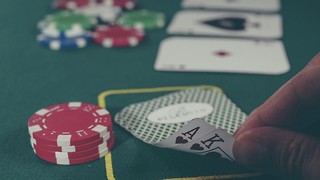The Essay: The Science of Cheating
Can runners ever compete on a level playing field? Vanessa Heggie asks whether drug bans and gender testing have any place in modern sport and society
As we count down to the opening ceremony of the 2012 London Olympic Games, it is likely that we will see headlines about two key issues: one is cost, and the other is ‘cheating’. In the case of the Olympics, ‘cheating’ is usually shorthand for drug use, or controversy about female athletes (other sports events have more inventive dramas about ball tampering, fake blood and putting extra players on the pitch). As recent high-profile cases have shown us, dope and gender are not issues that arise once every four years, but rather bubble under all areas of competitive sport, before erupting to cause hand-wringing, outraged blog posts, and new, often ‘scientific’ legislation.
The original rules against doping in the Olympic Games were introduced at the very first London Olympiad, in 1908. Competitors in the marathon were strictly forbidden to take dope of any sort, although without practical methods of testing for drugs this was more a request than a rule. The organisers probably had in mind two specific substances – alcohol and strychnine – that had been used by the winner of the last Olympic Marathon, at the 1904 St Louis Games. (This event had been a bit of a shambles; the original winner was disqualified when it emerged that he had been driven part of the way in a support car). We’re more likely now to think of these substances as a hindrance rather than a help, but they remain on the World Anti-Doping Agency’s Prohibited List. However, the Olympic officials of 1908 turned a blind eye to another enhancement product – in fact, they arranged for it to be given for free to the runners during the race. The official caterers for the Olympic Marathon of 1908 were Oxo, who provided their beef extract in drinks to athletes; Oxo, derived from Liebig’s original Extract of Beef, was a tonic food, intended and expected to improve health and vitality. Could it aid performance? Probably more so than alcohol...
From these small beginnings, athletic bodies are now amongst the most surveilled of all (free) human beings. This ranges from the unrelenting media commentary on the femininity (or otherwise) of elite competitive sportswomen, to the literal surveillance of drug tests, where athletes have to tell international authorities where they are living, eating, and sleeping. Athletic bodies are held up to standards which do not apply to the rest of us. In the 1960s and 70s it was quite possible to live your whole life as a woman, marrying, having children, and still be disqualified from the ‘women’s events’ of international sports. Social gender and sporting gender did not have to match. You or I can have a beer, a puff on our asthma inhaler, and a prescribed tablet of Viagra, and still go to work the next day in no fear of losing our jobs; this is not always true for the professional athlete in the first two cases, and Viagra is now under scrutiny by WADA. What other career demands that a man should choose between losing his job and sexual dysfunction?
It’s not always been like this. In the late 1930s the eccentric coach of Wolverhampton Wanderers Football Club claimed to be giving his lack-lustre players extracts of monkey glands to enliven their performance. Whilst there were some grumblings about this in the sporting and medical press (and a question raised in Parliament), there was absolutely no suggestion that any footballer taking hormone extracts for personal reasons should be banned for life. It was not until the middle of the twentieth century that we started to demand extraordinary purity of our athletes; the result of an unfortunate combination of Cold War suspicions, civilian drug and anti-drug movements, and the emergence of a medical specialism (sports medicine) which claimed that the athletic body was a distinct clinical object, not like the rest of us and subject to different laws, both physiological and sporting.
The debates surrounding dope and gender testing are useful, particularly to historians and sociologists, because they tell us about more than just sport. Sport insists that human beings compete as one of just two genders; biology, psychology and culture tell us that life is more complicated than that. By looking at the clash between sports gender and social gender we can understand both better. Likewise, drug bans assume a clear line between legitimate and illegitimate use, between nature and technology. None of those categories are straightforward, and increasingly, with blood doping and the possibility of genetic enhancement, discussions of ‘cheating’ in sport require us to grapple with extremely difficult bioethical questions about what it is to be an embodied human being. Changing attitudes towards what is fair and unfair, natural and unnatural, restorative or enhancing, reflect changing social and cultural conditions across the international sports community. For example: until the late 1960s training intensively (i.e. at a special site or camp) for more than four weeks in any Olympic year was considered ‘cheating’ by the International Olympic Committee.
Sporting competitions are fundamentally a measure of inequality between people; they are also often arbitrary. We have invented rules and regulations, designed special tracks and fields, introduced the technology of the stopwatch, laser measurement and chemical tests, in order to create a controlled environment in which a specific difference between human beings can be measured. Usain Bolt is not the fastest man in the world; he is the fastest human being who is a man according to our biosocial rules, who was culturally privileged enough to gain a sporting education, and who, over a defined but arbitrary distance, on a specific day, on a specific track, against a selected group of competitors, at an event recognised by international sports bodies, managed to cover the distance in the shortest time, measured by precisely defined timing technology, and fulfilled a stringent range of biochemical requirements about how much testosterone he had in his body. In those terms, it begins to be difficult to see sport as an expression of ‘natural talent’.
These arguments are just as relevant when we look at other ways to measure inequalities – for example in our education system. In terms of assessing ‘natural intellectual talent’, years at public school could be considered ‘cheating’ as much as blood doping or genetic engineering. But if all we care about is the outcome, regardless of how it is achieved, then we should be encouraging students to take the next generation of dope – the proliferating list of drugs which help memory and concentration. What is the inequality we are trying to measure? And how do we – and should we – ensure that everyone competes on a level playing field?
Vanessa Heggie is a research fellow in the Department of History and Philosophy of Science at Cambridge. She is currently researching the history of extreme sports, exploration and physiology, funded by the Wellcome Trust and Isaac Newton Trust.
 News / Meta opens £12 million lab in Cambridge 11 July 2025
News / Meta opens £12 million lab in Cambridge 11 July 2025 Lifestyle / Reflections on rowing10 July 2025
Lifestyle / Reflections on rowing10 July 2025 News / Write for Varsity this Michaelmas13 July 2025
News / Write for Varsity this Michaelmas13 July 2025 Features / How to catch a coat thief13 July 2025
Features / How to catch a coat thief13 July 2025 Comment / What is originality, anyway? 14 July 2025
Comment / What is originality, anyway? 14 July 2025








